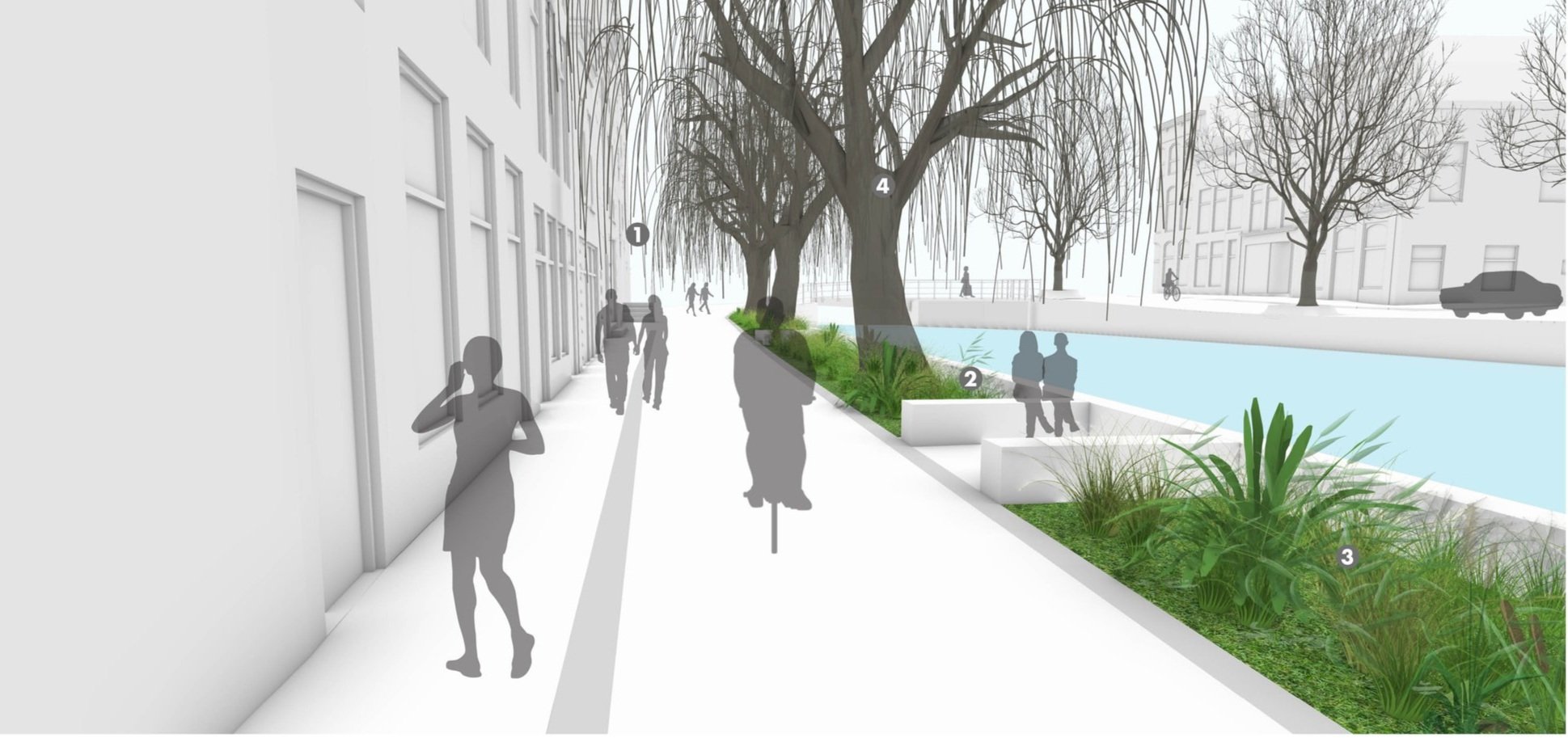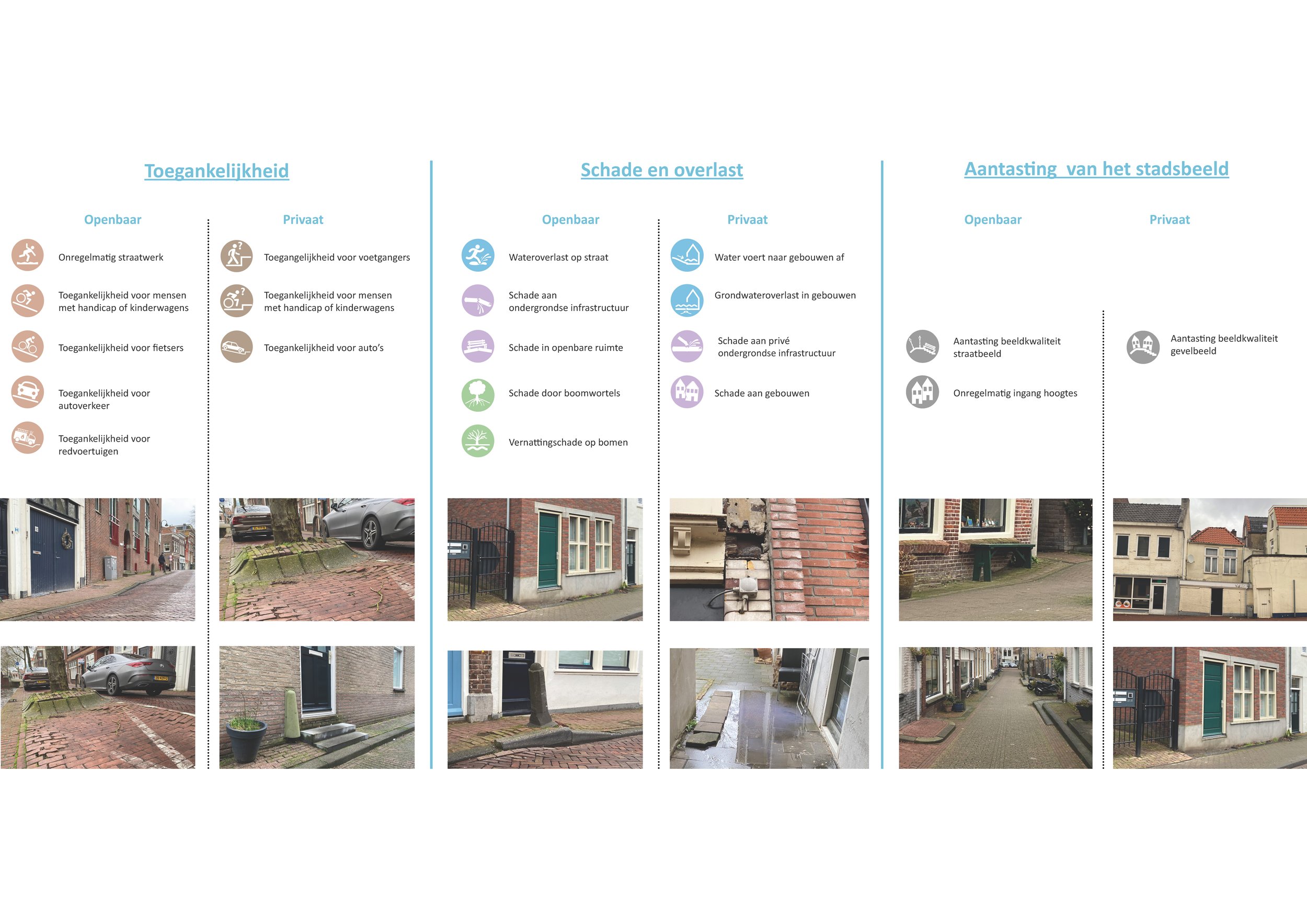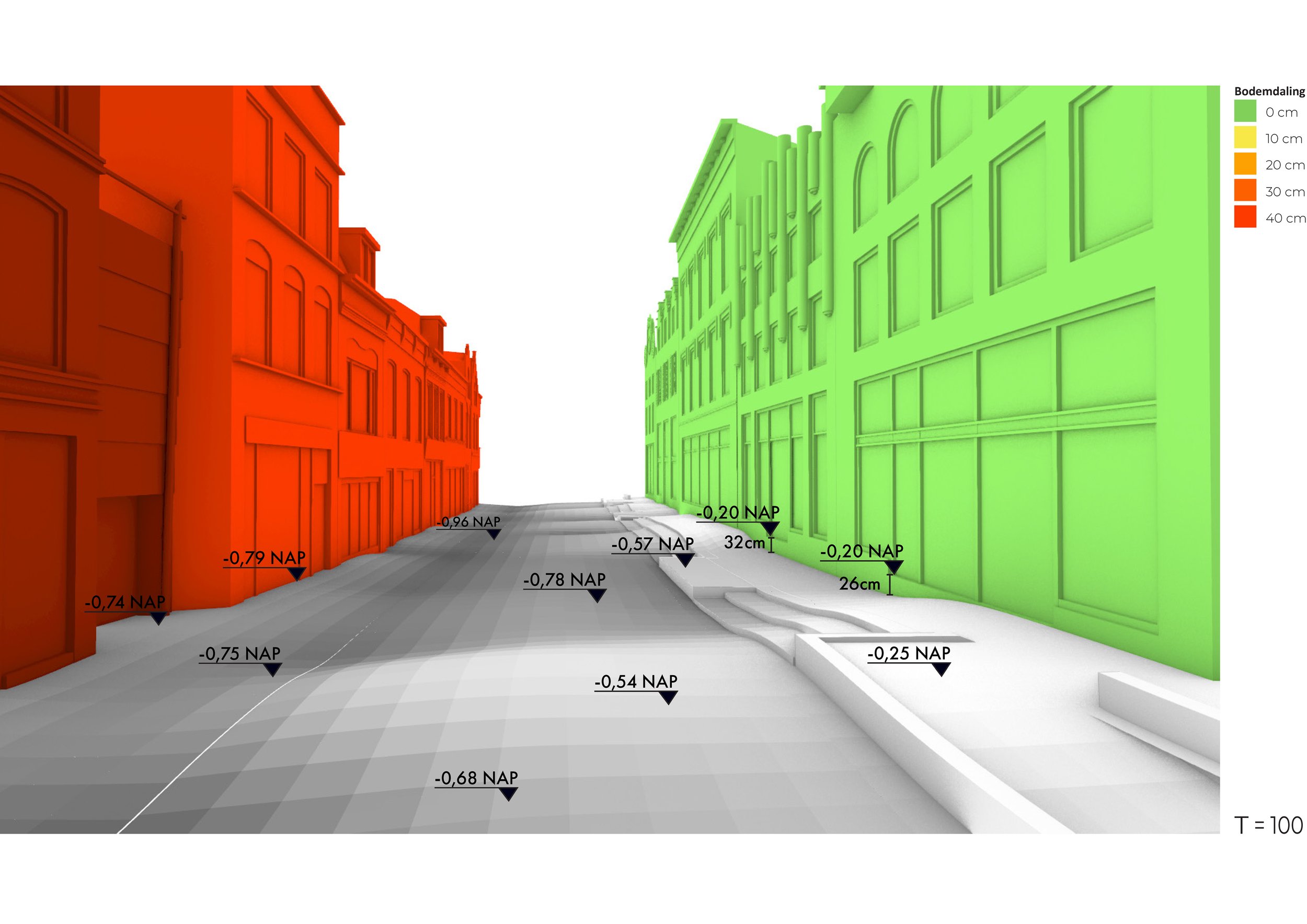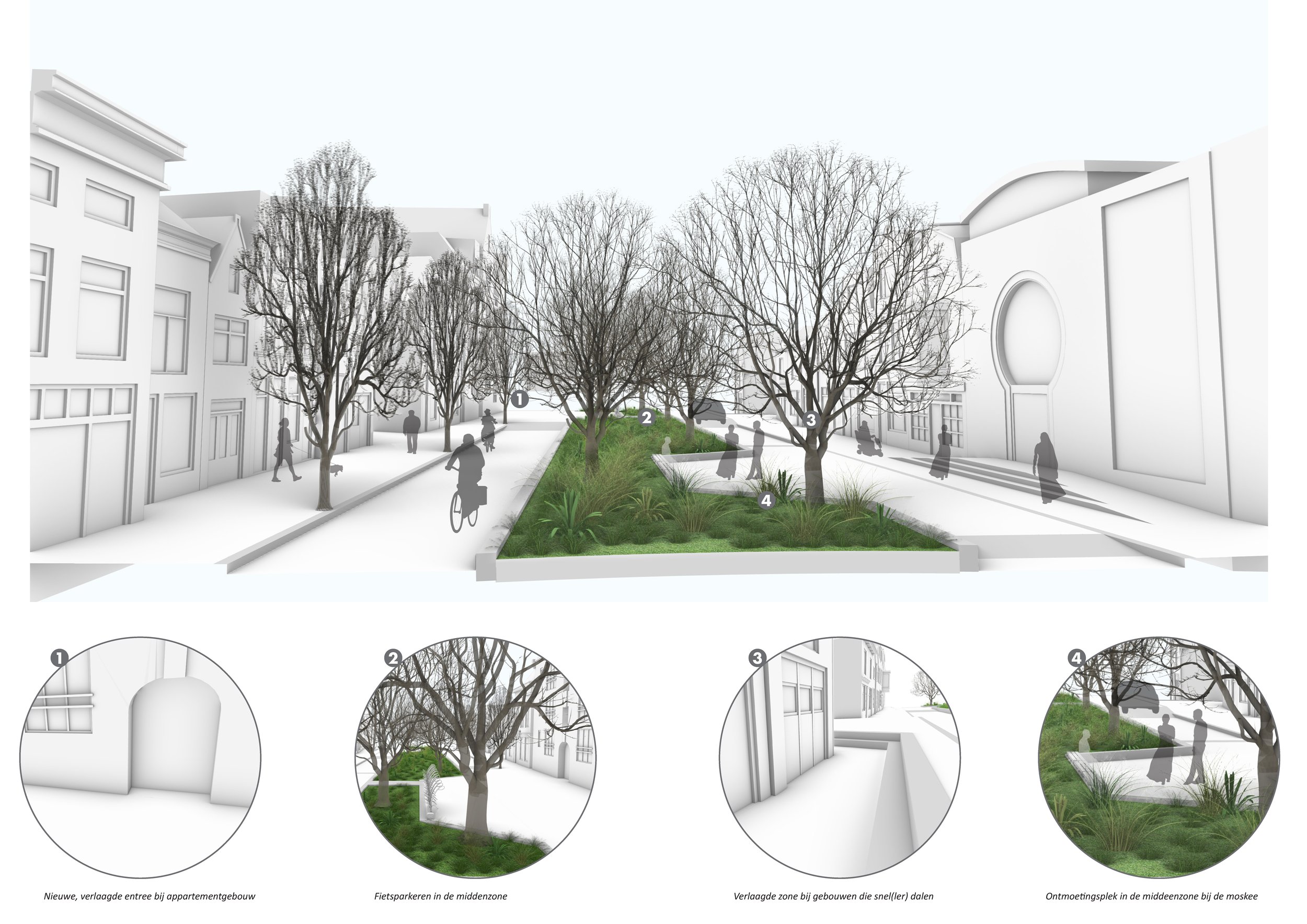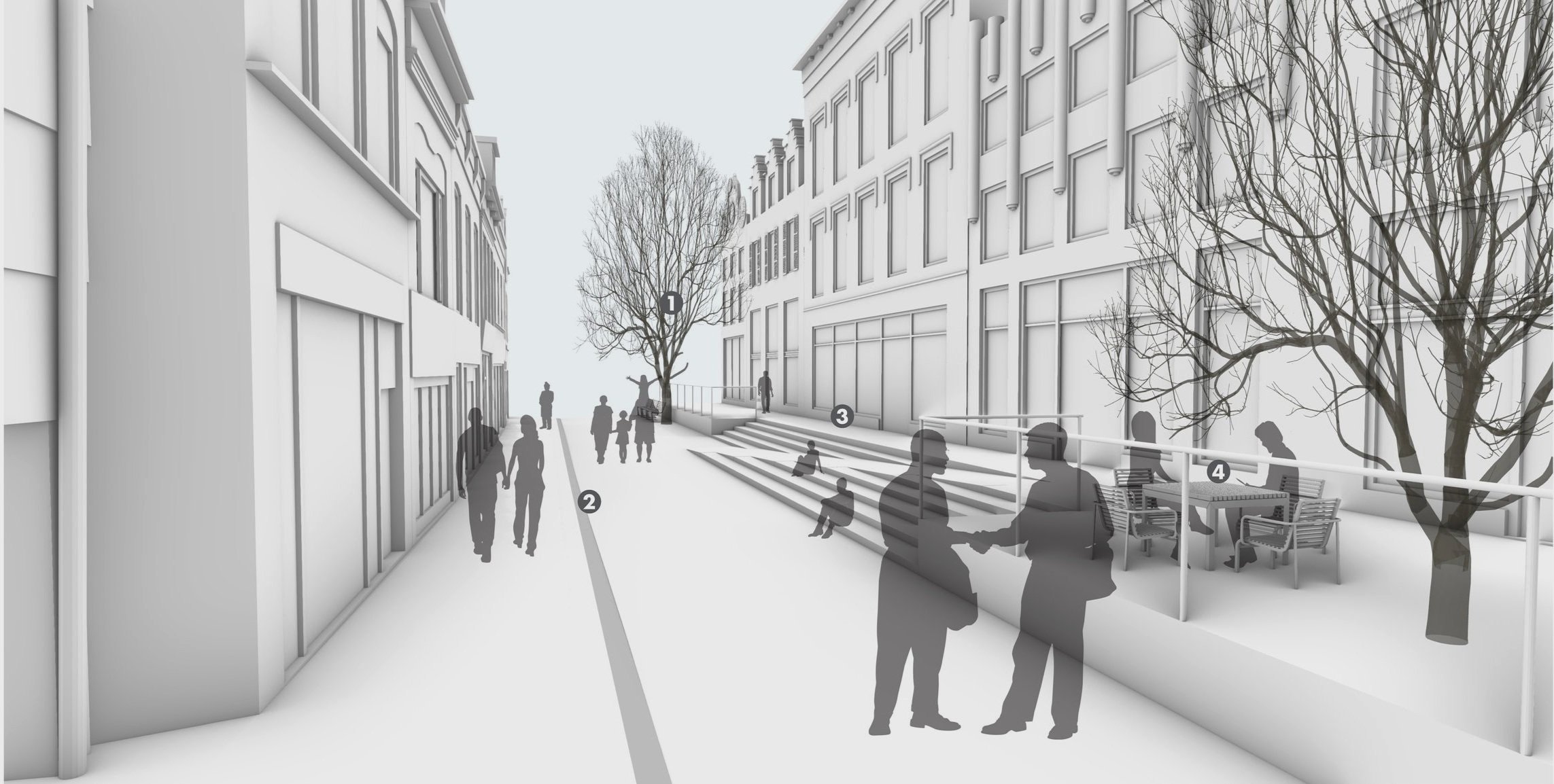
Subsidence & Heritage
Gouda, The Netherlands
Location | Gouda, The Netherlands
Year | 2022
Client | Municipality of Gouda
Status | Research by design
Collaboration | STATS Architecten
The city of Gouda is constantly dealing with soil subsidence, with visible consequences for buildings, public space and its historical center. De Urbanisten researched the effects of this phenomenon in public space and developed a decision making toolbox to help the local administration develop long-term strategies for the city.
Like in much of the lower parts of the Netherlands, the peaty soil under the city has been subsiding for centuries and will continue to do so for centuries to come. De Urbanisten were invited to conduct a research by design to visualize the long-term spatial consequences of soil subsidence in the protected historic city and investigate possible approaches to the diverse problems caused by this process: uneven streets, damage to protected buildings and public spaces, accessibility, flooding.
Four emblematic locations were selected and, using the available data and maps, the existing situation was modelled in 3D. Based on fine -grained data points from Skygeo, we modelled the expected subsidence over 50 and 100 years for the four sites and identified potential threats caused by subsidence in each specific site.
Based on this analysis, we developed a toolbox for soil subsidence which categorizes possible issues and a set of different solutions. This toolbox was used during workshops with a multidisciplinary team of the city of Gouda to generate possible strategies by selecting “clouds” of tools that were best fit to tackle soil subsidence in the specific locations and .
The toolbox became an inspiring and fun way for the municipality to discuss the complexities of subsidence and get dilemmas and choices on the table.
After selecting the most appealing strategy clouds with the municipality, we modelled how the implementation of such strategies would look like. This approach helps municipalities visualize the effects of soil subsidence in their cities and better grasp the effects this phenomenon has on the quality of the public realm. These images help to draw administrative attention to the problem and to make choices on future long-term strategies.
